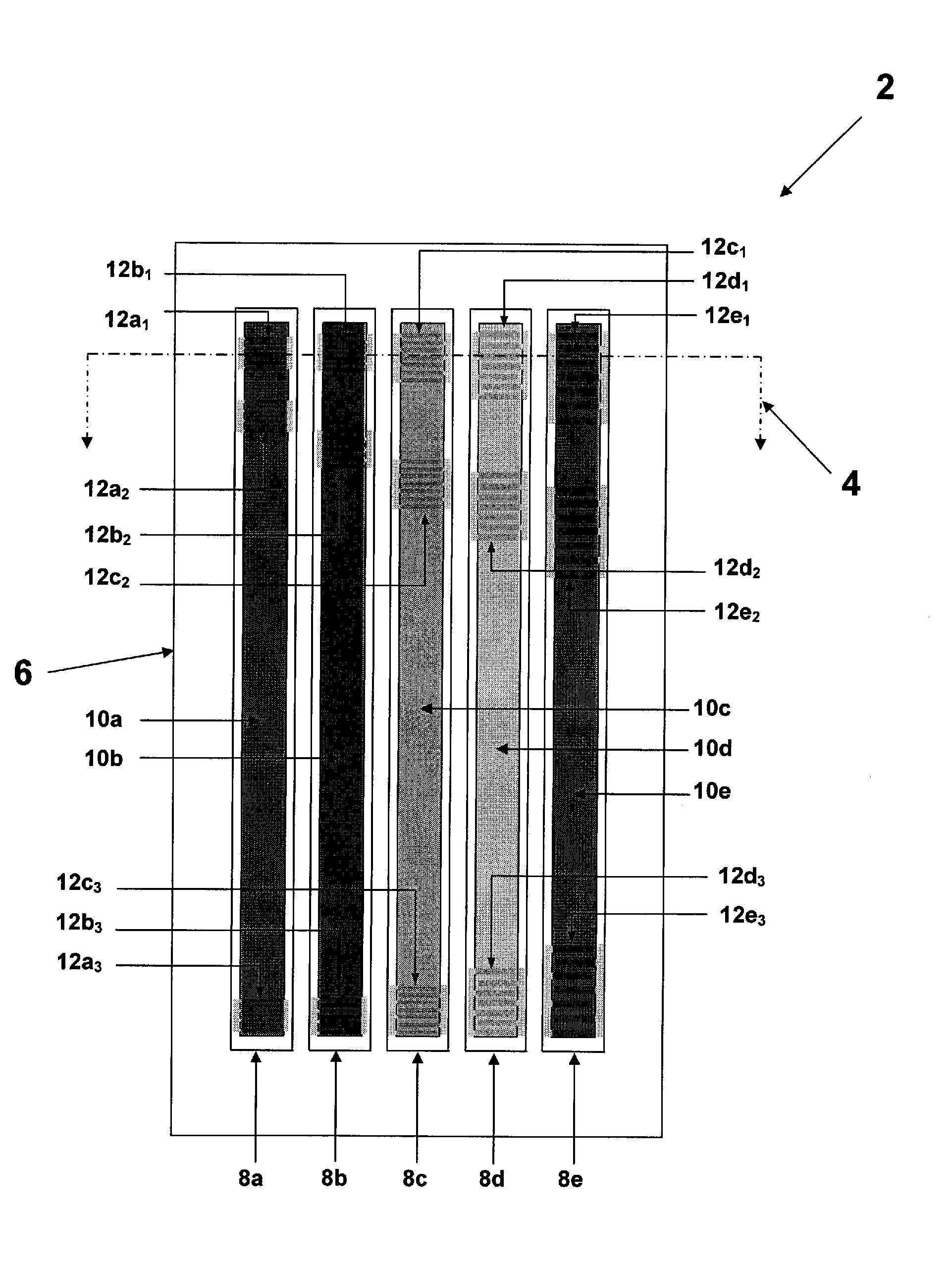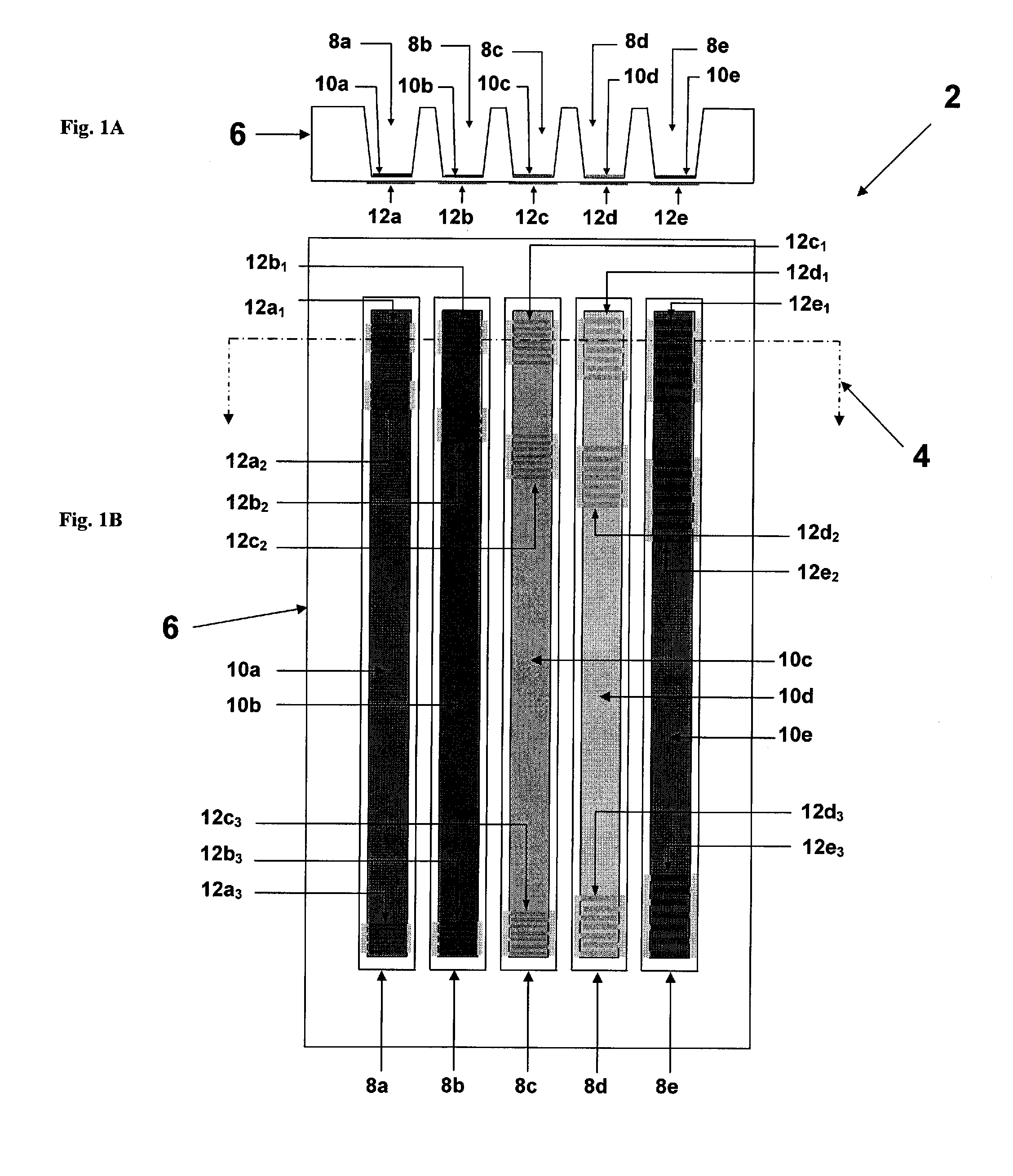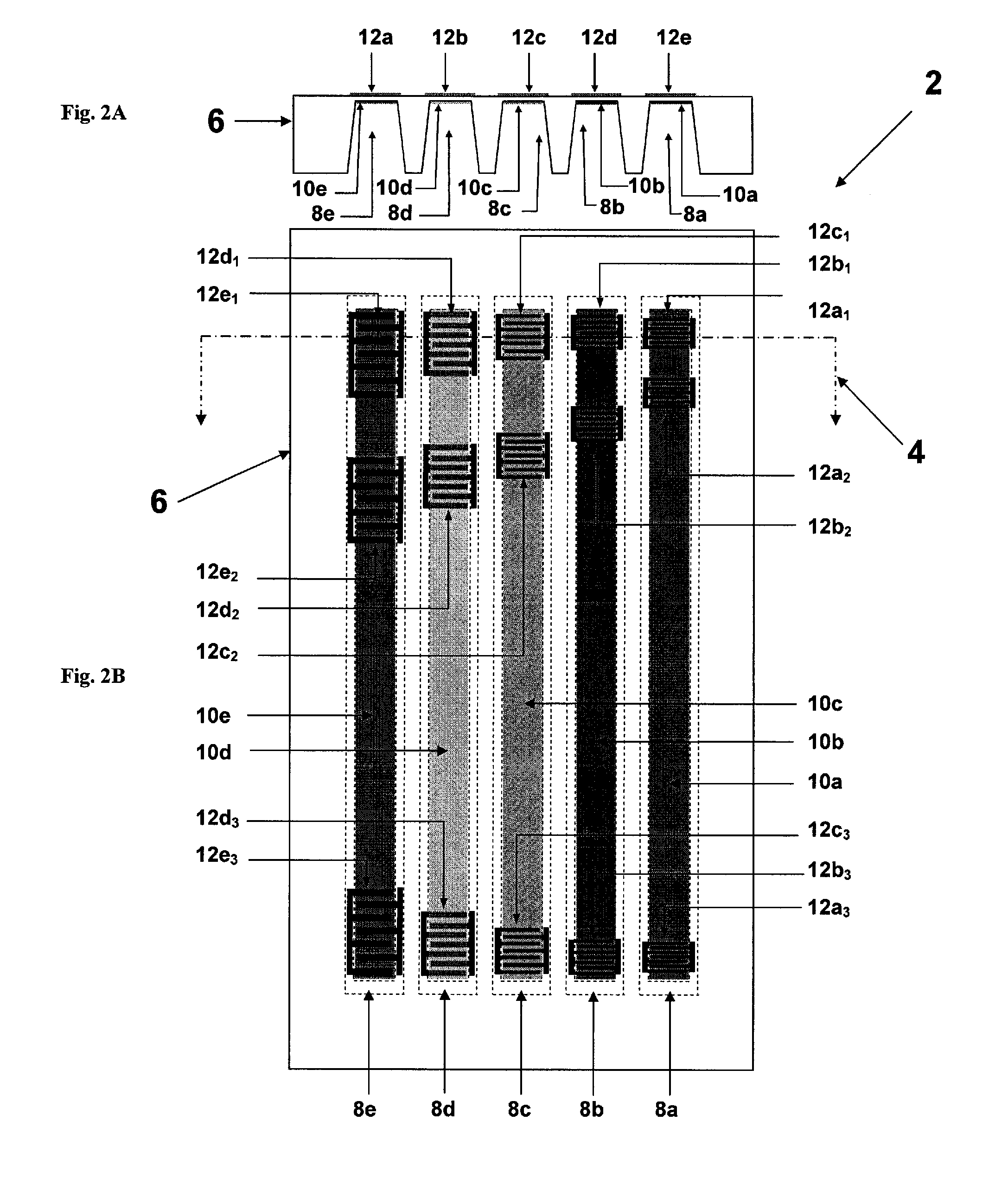Acoustic wave array chemical and biological sensor
a technology of acoustic wave array and chemical and biological sensors, which is applied in the direction of instruments, specific gravity measurement, furnaces, etc., can solve the problems of large attenuation of rayleigh wave, wave energy leakage into liquid, and difficulty in creating a physical interface between fluids and stw devices
- Summary
- Abstract
- Description
- Claims
- Application Information
AI Technical Summary
Benefits of technology
Problems solved by technology
Method used
Image
Examples
Embodiment Construction
[0014]The acoustic wave array sensors of embodiments of the current invention utilize four fundamentally different elements to realize advantages over prior art acoustic wave sensor array techniques. First, sensor embodiments utilize layer guided shear horizontal acoustic plate mode (LG-SH-APM) waves and associated Love waves propagating in thin-layer single crystal piezoelectric substrates coated with guiding layers to achieve enhanced sensor sensitivity. Multiple integrated microfluidic channels are utilized for ease of manufacturing and sample handling. Second, sensor embodiments utilize frequency diversity among channels or coding of individual channels to effect identification of individual sensor channel responses. Third, functionalization of separate channels is used together with channel identification, to produce simultaneous measurements of multiple parameters. Fourth, sensor embodiments utilize guiding layers placed on the substrate surface opposite the surface where the ...
PUM
 Login to View More
Login to View More Abstract
Description
Claims
Application Information
 Login to View More
Login to View More - R&D
- Intellectual Property
- Life Sciences
- Materials
- Tech Scout
- Unparalleled Data Quality
- Higher Quality Content
- 60% Fewer Hallucinations
Browse by: Latest US Patents, China's latest patents, Technical Efficacy Thesaurus, Application Domain, Technology Topic, Popular Technical Reports.
© 2025 PatSnap. All rights reserved.Legal|Privacy policy|Modern Slavery Act Transparency Statement|Sitemap|About US| Contact US: help@patsnap.com



